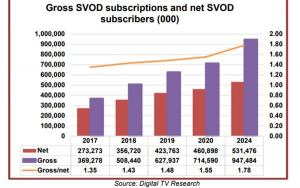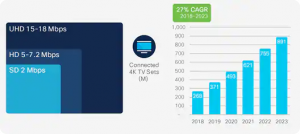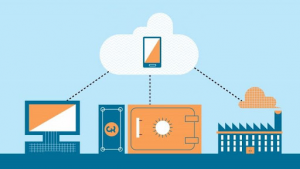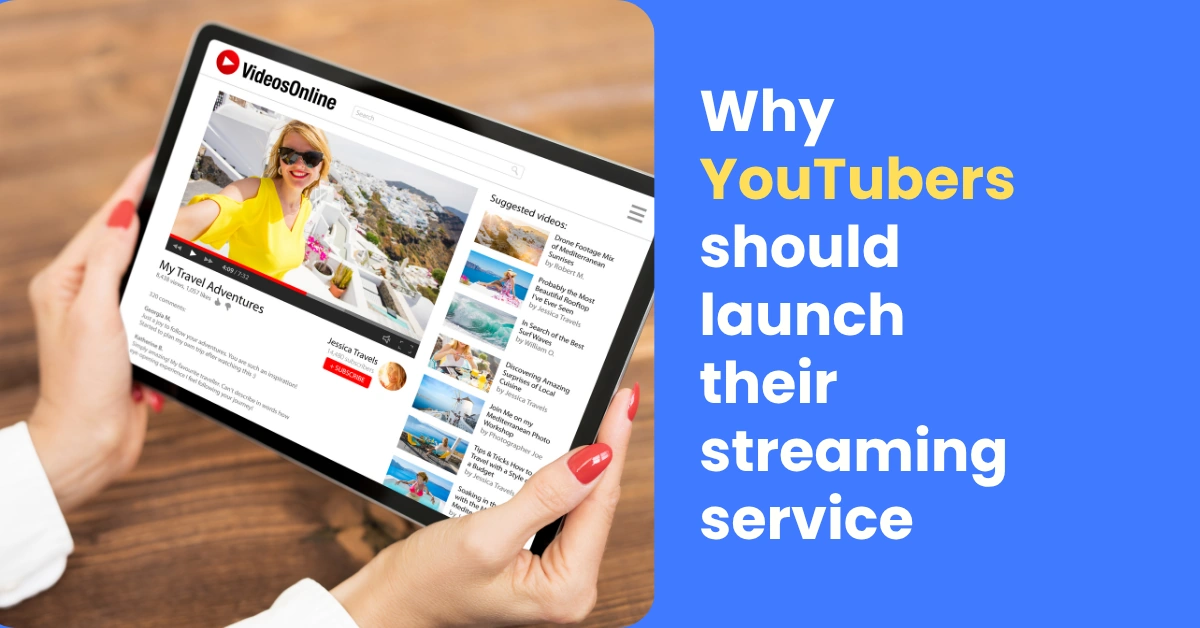What’s the future of the video streaming industry?
Last Updated on May 29, 2025 by Anjana Devi
As millennials, we have witnessed a massive change in the digital industry. Starting from the use of floppy drives for saving files and compact discs for curating, our favorite playlists in the early 2000s, coming to now, where the IoT ecosystem allows us to play any audio or video of our choice, anytime and anywhere. If we were to define ‘streaming’ in technical terms, it would translate as transmitting or receiving data (especially video and audio material) over a computer network as a continuous flow, allowing playback to start while the rest of the data is still being received. In colloquial terms, the understanding seems far simpler and mainstream for us.
The first two decades of the 2000s are proof of the enormous growth that the streaming industry has experienced, not without the support of the connectivity speeds of 4G and now 5G networks too! The growth and expansion of the streaming business are inevitable, as technology gets more sophisticated and connectivity becomes more widespread. The programming and engineering of streaming platforms remain complex, costly, and time-consuming, however, various platforms are now helping by democratizing the launching of live streaming platforms.

The break of the new year 2020, unluckily for most and luckily for a few, also concurrently saw the break of a virus-based pandemic – the COVID-19. The role of the streaming industry started becoming more imminent in people’s lives as people started watching more videos and the industry started moving towards an enormous boom.
These changes started happening across several segments like virtual learning, entertainment, telemedicine, online consultations, etc. The pandemic left individuals with no choice but to adapt and include such changes in their everyday lives. These improvements and their consequent adoptions are incessant. Let’s have a look at some big trends expected to continue growing, for a while at least.
Table of Contents:
5. Opened Gateway for diversity
1. Internet Connectivity
Probably one of the most key elements that seem responsible for the success and the expansion of the streaming industry is internet connectivity.

2. Edge Computing
Edge computing with its ability to reduce latency in videos, scalability, and lightning-fast delivery is enabling the streaming industry to reach soaring highs. Several low-latency protocols are being implemented as tools to reduce latency in video-streaming.
These include Web Real-Time Communications (WebRTC), Secure Reliable Transport (SRT), the Common Media Application Format (CMAF), and Apple’s Low-Latency HTTP Live Streaming (LL-HLS) extensions.
By 2023, ubiquitous streaming will allow the number of devices with internet connectivity to be three times the global population. Video streaming will be part of phones, laptops, iPads, cars, everywhere.
3. Optimizing Data Usage
Data is that commodity that only keeps giving, and with continued progress and advancements in technology, there’s more and more that can be derived from data. However, the most optimal use of data is said to have occurred when this data is collected, analyzed, and implemented right.
With the growth of internet users all over the globe, expected to be at nearly 2/3rd by 2023, the individual data consumers are expected to take over 74% of the total internet-powered devices and data connections. 5G connections will be approximately 13 times faster than the average mobile network by the year 2023.
With the demand from consumers at such a rapid rise, improvement in technology towards channelizing this data right becomes crucial. This is when Data Automation steps in to improve the viewing quality, enhance personalization and targeting, systemize distribution, and revolutionize content indexing. Powered by artificial intelligence and machine learning, data automation will drive systems towards dynamic intelligence.
4. Customer-centric Approach
How many times in our entire lives have we heard, “Customer is always right?”. Well, technology providers have understood the gravity of this statement and maneuvered their processes from being focused on technology to improvising on how this technology can make the consumers’ lives better.
Businesses are focused on enabling technology to understand each customer’s preferences and target them with content based on these preferences. For example, if a non-pet owner is constantly targeted by ads of dog food brands, the customer is (a) not interested, and, (b) will get annoyed after repeatedly being targeted by these ads.
For the dog-food brands too, it becomes a redundant marketing activity, causing a waste of marketing money and loss of opportunity cost in targeting the wrong audience. Personalized targeting thus avoids the build-up of customer frustration, disallowing any ad from bombarding a customer with the information they never asked for or will never need. It also allows brands to optimize their content, and marketing efforts by displaying the right content to the right audience.
5. Opened Gateways for Diversity
The era before streaming and when streaming technology had just launched, technology limitations disallowed many businesses to enter the industry. This meant that fewer channels could broadcast content using this technology and could only utilize the time and space they had to run a channel mix suitable for everybody. But with the continuous growth and advancement in this field, technology is becoming increasingly sophisticated to allow not only more businesses to enter the industry but also increasing the viewership base.
Streaming allows limitless virtual transmission of data and information, at low costs, that are reducing further with new and improved technology. This will allow businesses to make their platform’s content more niche, catering to a select few groups of audiences, without having them worry about profitability due to a reduced number of subscribers.
6. Improvement in quality
Though streaming quality has come a long way since it started, there is still scope for a lot of improvement in terms of audiovisual quality. Comparisons are still drawn between the quality of audio and visual output on streaming channels versus those through broadcast networks. Improved network connections and wireless technology will make streaming channels more sophisticated and neat in their sound and picture quality to leave their broadcasting counterparts well behind.
7. Unlimited Applications
Looking further into the future, streaming technologies will change the dynamics of almost everything we see around us – businesses, infrastructure, pandemics, etc. With the potential for widespread applications in the future, streaming technologies are only growing in terms of flexibility of use and ease of adaptability by businesses all around.
The adoption of these technologies no longer requires the businesses to set-up specialized teams of engineers internally. These technologies can be outsourced through experts, while you focus on:
- building video-enabled smart cities
- Implementing sophisticated software in healthcare devices
- Improving and maximizing sales through various available channels
Live-streaming technologies have found uses in several internal processes and external communications for businesses. Implementation of these technologies have helped increase efficiency and reduce costs and led to a paradigm shift in the way businesses communicate.
8. Streaming and M2M technology

Video streaming experiences are not necessarily for leisure or entertainment alone. With the fast-paced growth in network connectivity and more sophisticated technology, video streaming along with M2M (machine-to-machine) technology finds its applications where real-time data is captured and transmitted across several connected devices, simultaneously. These include – driverless cars, smart homes, medical institutions, etc.
Conclusion
Given the pace at which the industry is expanding, businesses are diving into it to grab the opportunity and contribute towards this expansion. In this highly competitive space, the need to act fast and deliver faster is the only way to survive. The three key areas that businesses need to be worried about when venturing into the streaming space are content, technology, and marketing.
While content is available everywhere, the technology is very complex and can be costly for businesses to get into. SaaS platforms, like Ventuno Technologies, are around to take this burden off you and put their expertise into play, while you worry about marketing your platform and its offerings right. Jump into the bandwagon of changing the entire landscape of the mainstream content-consumption experience, one view at a time.
What are your thoughts on this article? reach out to us at info@ventunotech.com if you would like to discuss!
Looking to launch your streaming app?





